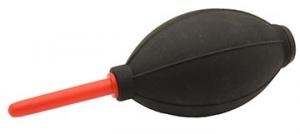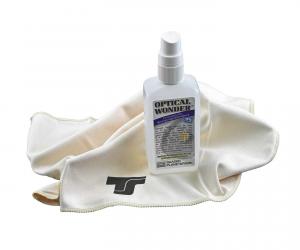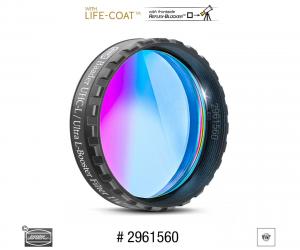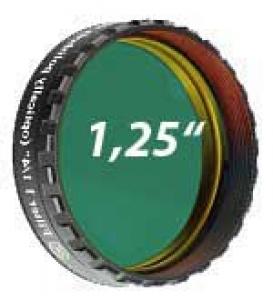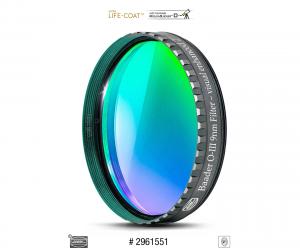- Telescopes
- Overview:
Telescopes - Achromatic Refractor
- Apochromatic Refractor
- Overview:
Apochromatic Refractor - ED Refractor - less color aberration than an achromatic
- SD APO - color free 2-element APO objective
- EDT APO - 3 element ED objective
- High End APO with 3-element APO objective - no color aberation
- Flatfield APO with flat field for Astrophotography
- All Apos and EDs from all manufacturers - large overview
- TS APO and ED from Japan with high quality optics
- Overview:
- Newtonian Telescopes
- Dobsonian Telescopes
- RC Ritchey Chretien Telescopes
- Casssegrain Telescopes
- Reflektor Telescopce with Lens Correcture
- Maksutov Cassegrain Telescopes
- GoTo Telescopes
- Solar Telescopes H-Alpha
- Overview:
- Mounts Tripods Rings Rails Power Supply ...
- Overview:
Mounts Tripods Rings Rails Power Supply ... - Mounts Equatorial with GoTo
- Mounts Equatorial without GoTo
- Mounts Azimutal with GoTo
- Mounts Azimutal without GoTo
- Mounts GoTo - Harmonic Drive
- Travel mounts for astro imaging
- Tripods Piers Polar Wedges
- Mount Control & Electronics
- Dovetail Clamps, Plates and Mount Adapters
- Tube Rings
- Power Supply
- Counterweights Balance Weights
- Mount Accessories - Other
- Overview:
- Telescope Accessories
- Overview:
Telescope Accessories - Eyepieces
- Barlows & Reducer Lenses
- Diagonal Mirrors and Prisms
- Binocular Viewers
- Finder Scopes
- Telescope Collimation and Test
- Cleaning Tools
- Transport and Storage
- Dust protection for Telescopes & Accessories
- Stray Light Protection
- Dewcaps and Heater
- Focusers, Adapters, Motorfocus
- Telescope DIY & Improvement
- Other telescope accessories
- Replacement Parts
- Overview:
- Filters
- Overview:
Filters - Color Filters and Color Filtersets
- Nebular Filters for Visual Observing
- Neutral-Density and Polfilter
- Photo Narrowband Nebular Filters
- Photo Broadband Filters
- Photo Planetary Filters
- Photo R-G-B and IR Cut Filters
- Photo - Filtersets
- Photometric Filters
- Clip Filter for DSLR Cameras
- Filter Wheels and Filterslider
- Solar Filters for white light
- Solarfilter for H-Alpha and Calcium
- Overview:
- Adaptors
- Overview:
Adaptors - Adapter 1,25" and 24,5mm
- Adapter 2"
- Adapter T2 - M42x0.75
- Adapter M48x0,75
- Adapter M54
- Adapter SC
- Adapter M63
- Adapter M68
- Adapter to other Threads
- Adapter Extensions
- Adapter camera bayonet
- Adapter Objective Filterthread
- Adapter Quick Changing , Rotation
- Adapter Eyepiece Projection
- Adapters Tilting
- Overview:
- Astrophotography and Photography
- Overview:
Astrophotography and Photography - Cooled Cameras
- Cameras without Cooling
- Deep-Sky Cameras uncooled
- Set-Offers Camera, Filter, Wheels
- Acessories for Cameras
- Travel mounts for astro imaging
- Imaging Correctors for Telescopes
- Autoguiding Cameras & Sets
- Everything for Guiding
- Focusing aids - Bahtinov mascs
- Flat Field foils and boxes
- Lenses for Cameras
- Piggyback Camera Holder
- Camera Bags, Photocases & more
- Digital Camera and Smartphone Adapter
- Other photo accessories
- Overview:
- Binoculars, Spotting Scopes, Microscopes, Range Finders
- Overview:
Binoculars, Spotting Scopes, Microscopes, Range Finders - Roof Prism Binoculars
- Binoculars with Porro prisms
- Binoculars from 100mm Aperture
- Binoculars with 1,25 inch eyepieces
- TSMX APO Binoculars
- Binoculars for Astronomy
- Binoculars Hiking Bird watching
- Monoculars - Opera Binoculars
- Accessories for Binoculars
- Spotting Scopes
- Range Finders
- Microscopy
- Bags for Phototripods & Binoculars
- Overview:
- Phototripods and Binomounts
- Books, Software
- Overview:
Books, Software - Books for Astronomy Beginners
- Star Charts and Planispheres
- Books about our Solar System
- Observing Tips for Amateurs
- Popular Astronomy Literature
- Teaching material
- Astrophotography books
- Telescopes, Observatories, Construction
- Calendars Yearbooks
- Software, Star Charts
- Books for Microscopers
- Books Nature and Animals
- Nature Photography TimeLapse
- Overview:
- Night Vision, Magnifiers, Weather, Domes & more
- Beginner Astronomy and Gift Ideas
- Second Hand & Special Offers
- New products
Manufacturer: Baader
Product number: BA2961550
EUR89.00new
EUR 89,00
incl. 19 % VAT (DE)
The VAT indicated refers to that applicable in Germany. After logging in, the VAT amount is adjusted to the applicable VAT of the stored delivery country. Therefore, the final price may vary accordingly.
excl. 6.95 € shipping costs (DE)
more details to the shipping costs ...Please log in to calculate shipping costs to your country.
There are no reviews for this product
- Details..
- Technical data..
- In the box..
- Manufacturer infos..
- Safety informations..
Baader O-III/Super-G filter - CMOS optimized
The O-III filter is designed for observing and photographing those gas nebulae in which doubly ionised oxygen fluoresces - i. e. primarily for planetary nebulae and supernova remnants. With a FWHM of only 9 nm and equipped with the CMOS-optimised coating technology, it darkens the sky background and thus also blocks stray light much better than its 10 nm predecessor (Baader O-III Filter (10 nm) visual). But the narrower FWHM is not the most important improvement. More important is the significantly better blocking aside of the [O III] wavelength, as well as even steeper transmission slopes and a broad plateau in the transmission range. With a transmission of 97% for the emission line at 500.7 nm, practically all the light of the nebula passes through the filter. At the same time, this filter can be used photographically for practically any focal ratio from f/1.8 to f/12 without passing any light of the H-beta line. This makes the Super-G filter just as ideal for use in areas with high light pollution.Baader O-III filters are blocked over virtually the entire visual spectrum - but additionally over the entire sensitivity range of modern CMOS sensors. This eliminates photographically the irritating colored halos often seen in O-III filters with less sophisticated coating technology at the important O-III sources.
Photographic use
The 9 nm O-III filter can be excellently used photographically on all telescopes, especially with a DSLR or an astronomical OSC colour camera. It offers all the advantages of the CMOS-optimised Baader filters such as Reflex-Blocker coating against reflections, plano-optical polishing and age-resistant Life-Coat coating. For monochrome cameras, we recommend the even stronger Narrowband (6.5 nm) and Ultra-Narrowband (4 nm) filters which are available specially adapted for different focal ratios. For this comparatively broadband 9 nm filter, preshifting is not necessary at focal ratios faster than f/4, thus it can be used at all focal ratios.
Super-G filter
The filter has the same thickness as the 1.25"/2" Baader LRGB filters. This makes it suitable for use as a "super G filter": In the transmission range of the normal green filter (490-580 nm) there are no emission lines other than [O III]; H-Beta at 486 nm is already covered by the RGB blue filter. So, when using the 9 nm O-III filter instead of the standard RGB green filter, emission nebulae are consequently emphasised much more strongly, while the stars appear fainter.
The Baader O-III Super-G filter has got all the advantages of the new generation of CMOS-optimized Baader filters:
| Filter type: | Narrowband (Narrowband) |
| Passband: | O-III |
| CWL (central wavelength): | 502 nm |
| FWHM (bandwidth): | 9 nm |
| Filter thickness (without cell): | 2 mm |
| Surface treatment: | Reflex-Blocker hard-coated, dielectric-coated, plane-optical polished |
| Filter cell: | mounted (LPFC 6 mm) |
| Net weight: | 0.006 kg |
| Manufacturer / Importeur: | Baader Planetarium GmbH |
| Street: | Zur Sternwarte |
| ZIP / City: | 82291 Mammendorf |
| Country: | Germany |
| Telefon number: | +49 8145 80890 |
| Email: | kontakt@baader-planetarium.de |
| Website: | www.baader-planetarium.com |
Safety informations: PDF Download
Recommended accessories
Cleaning & Collimating
Customers who bought this product also bought...
Similar Products
Reviews
Written by Jiri Gardavsky
on 2025-06-23
"Es ging um den Baader OIII Super G Filter, den ich dann während der darauf folgenden Zeit erfolgreich für die visuellen Beobachtungen von galaktischen Nebeln einsetzte."












